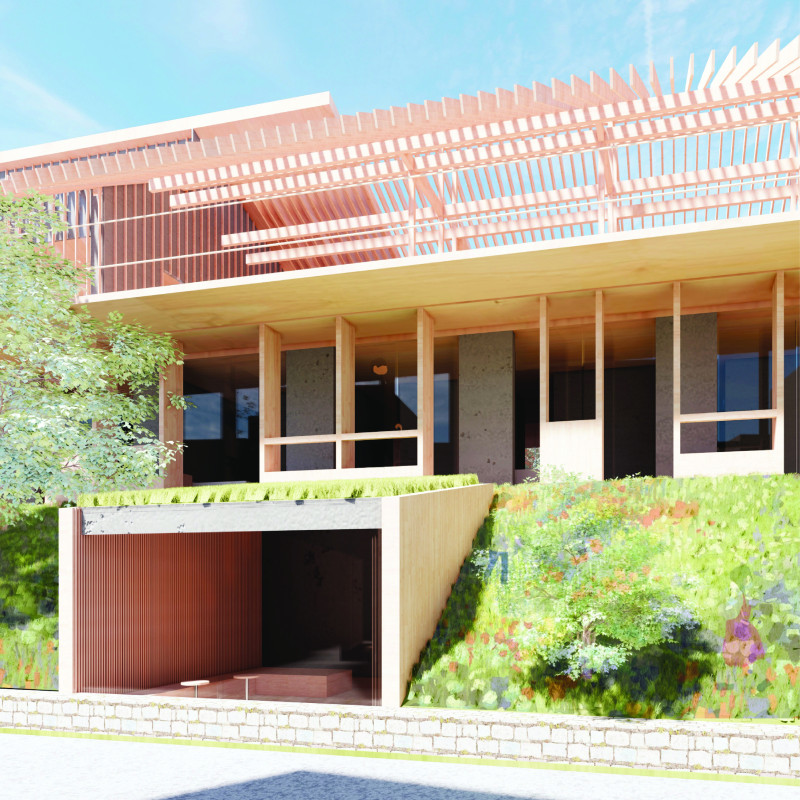5 key facts about this project
At its core, the design serves a dual function, accommodating both residential and commercial uses. This multifunctionality allows for a seamless blend of work and life, promoting an interactive atmosphere that encourages social engagement among users. The layout is carefully organized, ensuring that each space serves its intended purpose while also fostering connectivity. Common areas are strategically positioned to enhance the flow between different parts of the building, inviting natural movement without compromising privacy where necessary.
The architectural design embodies several key themes that reflect its purpose and environment. One important aspect is the emphasis on sustainability, demonstrated through the selection of eco-friendly materials and energy-efficient systems. By incorporating local materials that resonate with the region’s natural context, the design reinforces a sense of place, making it feel grounded and intrinsic to its surroundings. The choice of materials, from the warm textures of wood to the resilience of stone and metals, creates a tactile experience that enhances the overall ambiance of the space.
Special attention is given to the interaction between indoor and outdoor environments. Large windows and glass walls are employed to maximize natural light and provide unobstructed views of the landscape, promoting a connection with nature that is increasingly valued in today’s architectural designs. The integration of green spaces, such as terraces and landscaped areas, not only adds aesthetic value but also contributes to the well-being of the occupants, allowing them to engage with their environment in a meaningful way.
A unique design approach in this project is the incorporation of innovative architectural ideas that respond to climate and seasonal changes. Features such as appropriately designed overhangs and operable windows facilitate natural ventilation and temperature control, reducing reliance on mechanical systems and enhancing user comfort. Moreover, these elements are not just functional; they serve as defining characteristics that enrich the architectural narrative, adding complexity and depth to the overall visual interpretation of the structure.
The project stands out for its commitment to creating adaptable spaces that can evolve with the needs of its users. Flexibility is a core principle evident throughout the design, allowing areas to be reconfigured for different activities. This adaptability is particularly important in contemporary architecture, where the dynamics of use are often subject to change. By designing spaces that are easily alterable, the project ensures longevity and relevance in a rapidly changing environment.
In summary, this architectural design project encapsulates a holistic approach to building that prioritizes sustainability, functionality, and aesthetic harmony with its setting. Its careful attention to detail and innovative use of materials highlight the potential of architecture to create spaces that are not only livable but also enriching. For those interested in delving deeper into this project, exploring the architectural plans, sections, and designs will reveal the thoughtful considerations and architectural ideas that inform this compelling structure.


 Nguyễn Trần Huy Vũ
Nguyễn Trần Huy Vũ 























